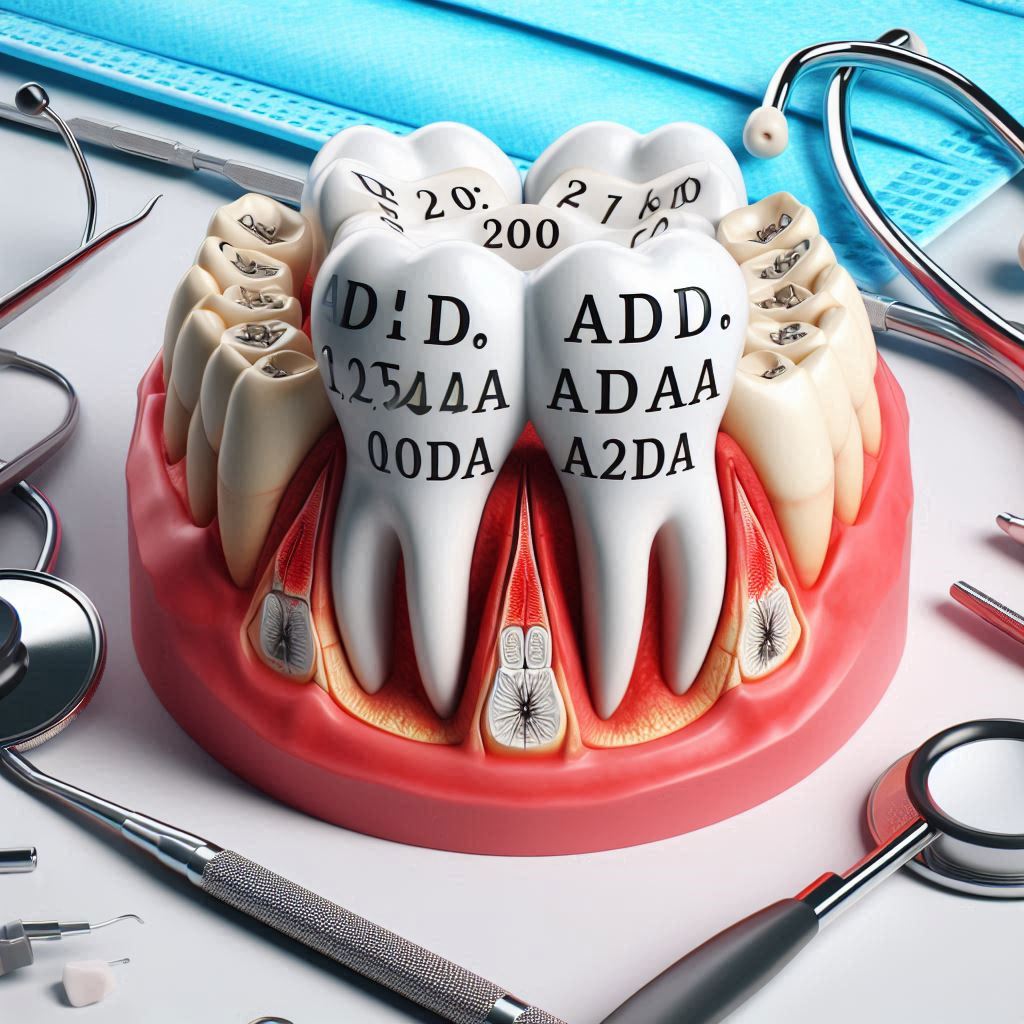ADA Dental Codes for the Oral Cavity
The American Dental Association (ADA) has established a standardized system of dental codes to streamline communication, billing, and record-keeping in dental practices. These codes, known as Current Dental Terminology (CDT) codes, are essential for dental professionals, insurance companies, and patients alike. This article delves into the intricacies of ADA dental codes specifically related to the oral cavity, providing a detailed classification, chart, removal procedures, and diagrams. Whether you’re a dental professional, a student, or a patient seeking clarity, this guide will serve as an invaluable resource.

ADA Dental Codes Oral Cavity Classification
The oral cavity is a complex structure comprising the teeth, gums, tongue, palate, and other soft tissues. ADA dental codes categorize procedures related to the oral cavity into several groups, ensuring clarity and precision in documentation. Below is a detailed classification of these codes:
Diagnostic Codes (D0100-D0999)
These codes cover procedures related to the examination and diagnosis of oral cavity conditions. Examples include:
- D0120: Periodic oral evaluation
- D0140: Limited oral evaluation
- D0150: Comprehensive oral evaluation
Preventive Codes (D1000-D1999)
Preventive codes focus on maintaining oral health and preventing diseases. Key codes include:
- D1110: Prophylaxis (cleaning) for adults
- D1206: Topical fluoride treatment
- D1351: Sealant application
Restorative Codes (D2000-D2999)
Restorative codes pertain to procedures that repair or restore the function and aesthetics of the oral cavity. Examples are:
- D2140: Amalgam filling (one surface)
- D2330: Resin-based composite filling (one surface)
- D2750: Crown placement
Endodontic Codes (D3000-D3999)
These codes relate to root canal treatments and other procedures involving the dental pulp. Notable codes include:
- D3310: Root canal therapy (anterior tooth)
- D3320: Root canal therapy (bicuspid tooth)
- D3330: Root canal therapy (molar tooth)
Periodontic Codes (D4000-D4999)
Periodontic codes address procedures related to the gums and supporting structures of the teeth. Examples are:
- D4341: Scaling and root planing (per quadrant)
- D4910: Periodontal maintenance
Oral Surgery Codes (D7000-D7999)
These codes cover surgical procedures within the oral cavity, such as extractions and biopsies. Key codes include:
- D7111: Extraction of a coronal remnant
- D7210: Surgical extraction of an erupted tooth
Prosthodontic Codes (D5000-D5899)
Prosthodontic codes involve the replacement of missing teeth with prosthetics like dentures and bridges. Examples are:
- D5110: Complete upper denture
- D5213: Partial lower denture
Orthodontic Codes (D8000-D8999)
Orthodontic codes pertain to procedures that correct misaligned teeth and jaws. Notable codes include:
- D8010: Limited orthodontic treatment
- D8070: Comprehensive orthodontic treatment
ADA Dental Codes Oral Cavity Chart
To simplify the understanding of ADA dental codes, the following chart provides a quick reference for common procedures related to the oral cavity:
| Code Range | Category | Example Codes | Description |
|---|---|---|---|
| D0100-D0999 | Diagnostic | D0120, D0140, D0150 | Evaluations and examinations |
| D1000-D1999 | Preventive | D1110, D1206, D1351 | Cleanings, fluoride treatments, sealants |
| D2000-D2999 | Restorative | D2140, D2330, D2750 | Fillings, crowns, and other restorations |
| D3000-D3999 | Endodontic | D3310, D3320, D3330 | Root canal treatments |
| D4000-D4999 | Periodontic | D4341, D4910 | Gum treatments and maintenance |
| D7000-D7999 | Oral Surgery | D7111, D7210 | Extractions and surgical procedures |
| D5000-D5899 | Prosthodontic | D5110, D5213 | Dentures and bridges |
| D8000-D8999 | Orthodontic | D8010, D8070 | Braces and alignment treatments |
ADA Dental Codes Oral Cavity Removal
Removal procedures within the oral cavity are categorized under oral surgery codes (D7000-D7999). These codes are essential for documenting extractions, biopsies, and other surgical interventions. Below are some key removal codes:
D7111: Extraction of a Coronal Remnant
This code is used when only the crown of a tooth remains, and it needs to be extracted. It is a common procedure for severely decayed or broken teeth.
D7210: Surgical Extraction of an Erupted Tooth
This code applies to the removal of a tooth that has fully erupted but requires surgical intervention due to complications like impaction or root fractures.
D7240: Removal of Impacted Tooth
Impacted teeth, such as wisdom teeth, often require surgical removal. This code covers the extraction of teeth that are partially or fully embedded in the jawbone.
D7285: Biopsy of Oral Tissue
When abnormal tissue is detected in the oral cavity, a biopsy may be necessary to diagnose conditions like oral cancer. This code is used for such procedures.
ADA Dental Codes Oral Cavity Diagram
To better understand the oral cavity and the procedures associated with it, refer to the following diagram:
Figure 1: Diagram of the Oral Cavity
The diagram highlights key structures such as the teeth, gums, tongue, palate, and salivary glands. Each structure plays a vital role in oral health and is associated with specific ADA dental codes.
Conclusion
ADA dental codes for the oral cavity provide a standardized system for diagnosing, treating, and documenting dental procedures. From diagnostic evaluations to complex surgical interventions, these codes ensure clarity and efficiency in dental practices. By understanding these codes, dental professionals can enhance patient care, streamline billing processes, and maintain accurate records.
FAQs
1. What are ADA dental codes?
ADA dental codes, or CDT codes, are standardized codes used to describe dental procedures for billing and documentation purposes.
2. How often are ADA dental codes updated?
The ADA updates the CDT codes annually to reflect advancements in dental practices and technology.
3. Can patients access ADA dental codes?
Yes, patients can request a detailed breakdown of the codes used in their treatment for transparency and billing purposes.
4. Are ADA dental codes used internationally?
While ADA codes are primarily used in the United States, other countries may have similar coding systems tailored to their healthcare practices.
Additional Resources
- American Dental Association (ADA) Official Website
- Current Dental Terminology (CDT) Code Manual
- National Institute of Dental and Craniofacial Research (NIDCR)


